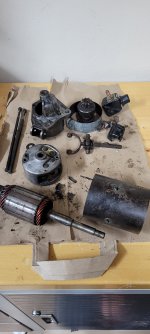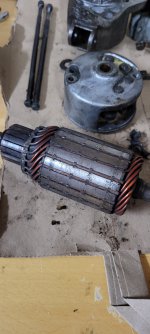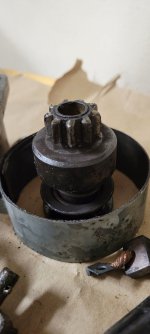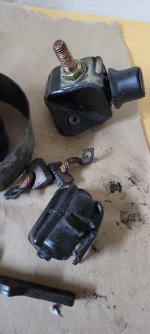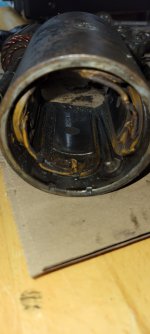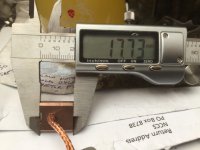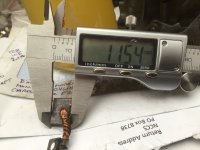I'll assume you checked the battery state of charge, the cleanliness and security of the battery leads, also the battery earth lead to body and
earth lead between engine and body before you removed the starter motor.
Was the battery used to test the starter motor out of the car in a good state of charge?
Do you have a multi-meter or ohm-meter? If you have, you can check out the field coils (8.1-8.3 ohms), also check for shorts/open circuits on the commutator segments. To check for a short in the armature, there should be no continuity between the armature centre shaft and any of the commutator segments. To check for an open circuit in the armature windings, you connect iirc, the ohm/multi-meter leads to directly opposite segments on the commutator, I can't recall the ohms figure but iirc it's only a few ohms?
If you haven't got a workshop manual, there's a free one available in the Downloads section (in the blue band at the top of the page). If you look this one up, see page 114-115 for starter motor checks, the resistance figures for the field windings are given here. Also page 113, last paragraph for info on signs of different types of armature failure.
When I read your 1st post, I thought of a dead spot or lack of continuity in one place on the starter commutator but as you've removed/stripped/re-assembled the starter, it's unlikely the armature went back in exactly the same location that it failed in. However you could try rotating the armature a little and then apply power, just to rule out a dead spot on the commutator as the problem.
Sudden failure of the starter motor is unusual, usually the motor function gradually deteriorates - unless e.g. a connection breaks, but you've had the motor apart, cleaned and examined everything carefully.
I always prefer to rebuild my own starter motors etc. - you never know how good a job (or not) that someone you don't know has done. Cheaper too

Al.


